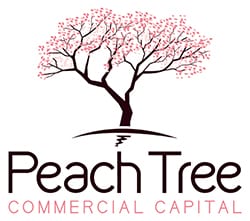Running a business is a cash intensive activity. To make money, you need funds available to pay your team, purchase raw goods, pay leasehold and other overhead expenses. Many businesses have the equipment, facilities and team members to fulfill any project that comes your way, but find that the price of this readiness comes at the cost of becoming cash strapped, reducing the flexibility to respond to emerging opportunities.
Access to working capital is a necessary part of any company’s ability to stay competitive and vibrant. Working capital is the difference between your short term debts and short term assets, things like accounts receivable, cash and stock on hand. The idea of working capital is that these assets turn over quickly into cash that you are able to use to purchase new goods, hire people, cover expenses, and act quickly on emerging opportunities.
However, when turnover in any of these areas slows down – i.e. your customers request an extension of their repayment period, foot traffic or online orders slow to a trickle, or you purchase stock that misses a trend and isn’t moving, being able to get your hands on ready cash to turn on a dime can allow you to meet new challenges head-on.
Many businesses respond by taking out a merchant cash advance, which might not be the best option. Their high interest rates and untenable repayment schedules make these sort of quick-money plans unsustainable. All too often, entrepreneurs find themselves regretting these sorts of advances and wish they had found other options to raise the cash they need.
The good news is that other options exist if you know where to look for them. These options include:
Factoring
Clients with future payments on their accounts sounds great, but it is only good for your business if they actually pay. The longer they wait to pay, the slower your velocity of money and, in the end, the less money you are making. Factoring allows you to sell these outstanding accounts to a third party. In one sense, it is a win-win because it enables you to bring in cash now, while the buyer makes their money when the client pays on the originally agreed upon schedule. Some factors claim a fee as low as 1% of the total invoice.
Lines of Credit
One of the most tried and tested ways to bring in working capital is through a line of credit. There are many different types of credit lines, but they all share the feature that your business is able to draw from a line of credit when it is needed to make purchases, cover payroll or do whatever else is needed in the day-to-day working life of your business. Each provider offers different terms based on whether the line is secured or unsecured, among other factors, so it is important to examine the details.
Sale Leaseback
A sale leaseback is when a business sells an asset, such as a piece of equipment, to a third party, and then leases it back for further use. On one hand, it might seem like a strange transaction, but on the other hand, it makes sense. The money spent on the lease is far less than the money earned from the sale, which is important when your company needs a quick cash injection.
It is an ideal scenario when you are using equipment but already have a plan to move into newer, updated technologies. You might use the cash from the sale leaseback as a down payment on new equipment and to train up while still utilizing your previous tools in your daily work.
Hard Money Loans
A hard money loan is a specific type of loan that is secured with real property. If your business owns land or buildings, you can use a hard money loan to bring in working capital when you need it. Just make sure you are able to meet the terms, or you will find yourself losing valuable property that cannot be replaced. Hard money is great when seeking to fund high value purchase orders when a client places a custom order outside of your usual scope. Receive funds, order goods and fulfill your contract, then complete the deal when your client pays you. If this is in addition to your usual delivery of goods without incurring added costs such as overtime, it simply results in added profit for your business.
Bridge Money Loans
If you are looking to expand or grow your business, it can be hard to raise the money you need to secure new facilities. This is where bridge loans come in. A bridge loan is a type of loan that lets you fill in the gap between your existing facilities and something new. This type of loan covers the expense of your new facility, purchase your new property with the bridge loan and then cover the loan by selling off your old property. It’s a short-term loan that can have long-term benefits for your company.
SBA Loans
The federal government’s Small Business Administration has several different types of loans that are designed specifically to help small businesses. Depending on your size and your needs, these loans can help get keep your business afloat or rise to the next set of challenges. Each loan type has its own terms. Our loan brokers make sure you understand the features of available options to help you choose the loan that is right for you.
If your business is looking for working capital to expand and grow, it is important to connect with reputable lenders. Our loan brokers have developed a network of over 100 recognized independent lenders to provide you the options, terms and financing to meet your business goals. Give us a call today.

